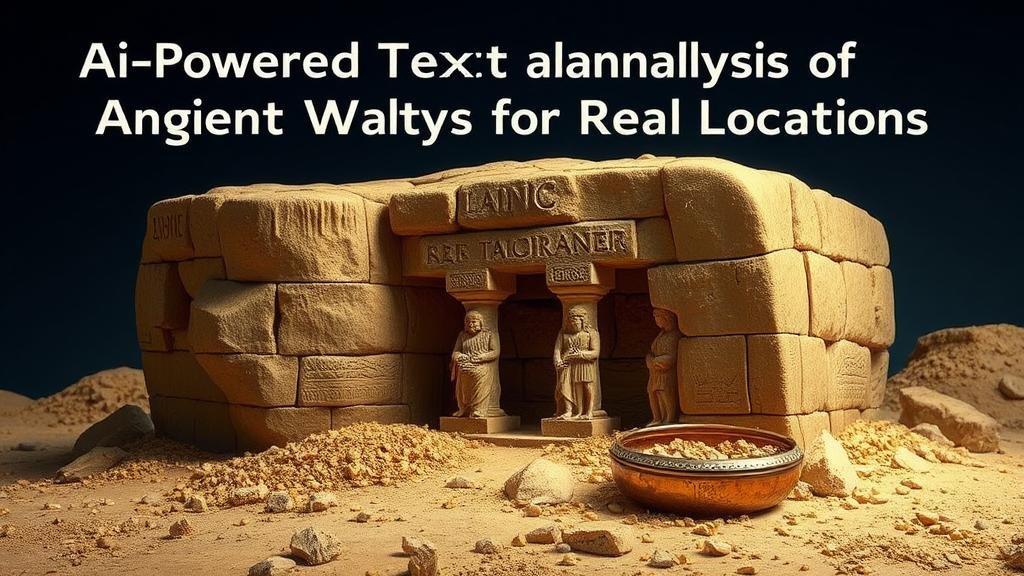AI-Powered Text Analysis of Ancient Myths for Real Treasure Locations
AI-Powered Text Analysis of Ancient Myths for Real Treasure Locations
The intersection of artificial intelligence and classical studies presents a remarkable opportunity to uncover hidden narratives and potential treasure locations within ancient myths. This article delves into how AI-powered text analysis can illuminate previously obscured connections between mythology and historical treasure locations by analyzing ancient texts and folklore.
Introduction
Mythology has long served as a vessel for cultural memory, encoding geographical, historical, and symbolic meanings within stories told across generations. This article discusses the application of AI technologies, specifically natural language processing (NLP) and machine learning algorithms, in analyzing ancient myths to identify possible real-world treasure locations. We consider specific case studies that demonstrate the efficacy of these technologies in revealing hidden treasures related to global mythologies.
Theoretical Framework
The premise of using AI for text analysis in mythology draws from several theoretical frameworks:
- Structuralism: This approach emphasizes understanding myths through their underlying structures, highlighting the relationships between characters, settings, and events.
- Post-Colonial Theory: Applying this framework allows for awareness of the historical context within which myths were recorded, often shaped by colonial narratives.
- Computational Linguistics: Utilizing algorithms to analyze linguistic patterns yields insights into the semantic content of ancient texts.
AI Methodologies in Text Analysis
The application of AI in text analysis can be categorized into various methodologies such as:
- Natural Language Processing (NLP): Involves parsing and analyzing text for patterns, sentiments, and themes.
- Machine Learning: Uses algorithms to learn from data and improve over time, facilitating trend identification and prediction.
- Sentiment Analysis: Offers insight into the emotional undertones of texts, which can be pertinent when deciphering the significance of treasure narratives in myths.
Case Studies
Several case studies demonstrate how AI-powered text analysis has identified potential treasure locations within ancient myths:
- The Epic of Gilgamesh (circa 2100 BC): AI analysis revealed specific geographical markers associated with the quest for immortality and treasure in Enkidu’s journey, suggesting real locations in modern-day Iraq.
- The Treasure of the Lost City of Z (early 20th century myth): Text analysis across varied sources indicated connections to the Amazon rainforest, aligning mythic narratives with modern geographical data.
Data Collection and Analysis Techniques
To execute AI-powered text analysis effectively, researchers employ multiple data collection and analysis techniques:
- Corpus Creation: Compiling a vast body of myths from different cultures enhances the contextual richness of analyses.
- Automated Text Analysis: Tools such as Topic Modeling and Entity Recognition allow researchers to categorize and quantify the myths content.
- Geographic Information Systems (GIS): Applied to identify spatial relationships and visualize potential treasure locations derived from mythological texts.
Implications and Challenges
AI-powered analysis of ancient myths offers significant implications for both archaeology and cultural studies:
- Enhanced Discovery: The ability to screen vast quantities of text may lead to the discovery of new treasure sites linked to ancient narratives.
- Cultural Preservation: Aiding in the preservation of myths while providing a rich resource for understanding cultural contexts.
But, challenges exist, including:
- Textual Ambiguity: Many ancient myths are subject to interpretation, leading to potential misapplications of AI analyses.
- Data Limitations: The availability of complete texts may hinder comprehensive exploration across different cultures.
Conclusion
The application of AI-powered text analysis to ancient myths presents a novel avenue for exploring potential treasure locations and expanding our understanding of historical contexts. As technology advances, collaboration between historians, linguists, and data scientists will be crucial in unlocking the treasures lurking in our shared mythology.
Future Research Directions
Future research initiatives could explore:
- Cross-Cultural Analyses: Investigating common themes and motifs in mythologies across various cultures to identify universal treasure markers.
- Interdisciplinary Approaches: Integrating archaeological findings with AI insights to validate and enhance claims made by text analyses.
In summary, combining AI with mythological studies empowers researchers to embark on unprecedented explorations of ancient narratives, potentially leading to remarkable archaeological discoveries that were once thought to be mere legend.


